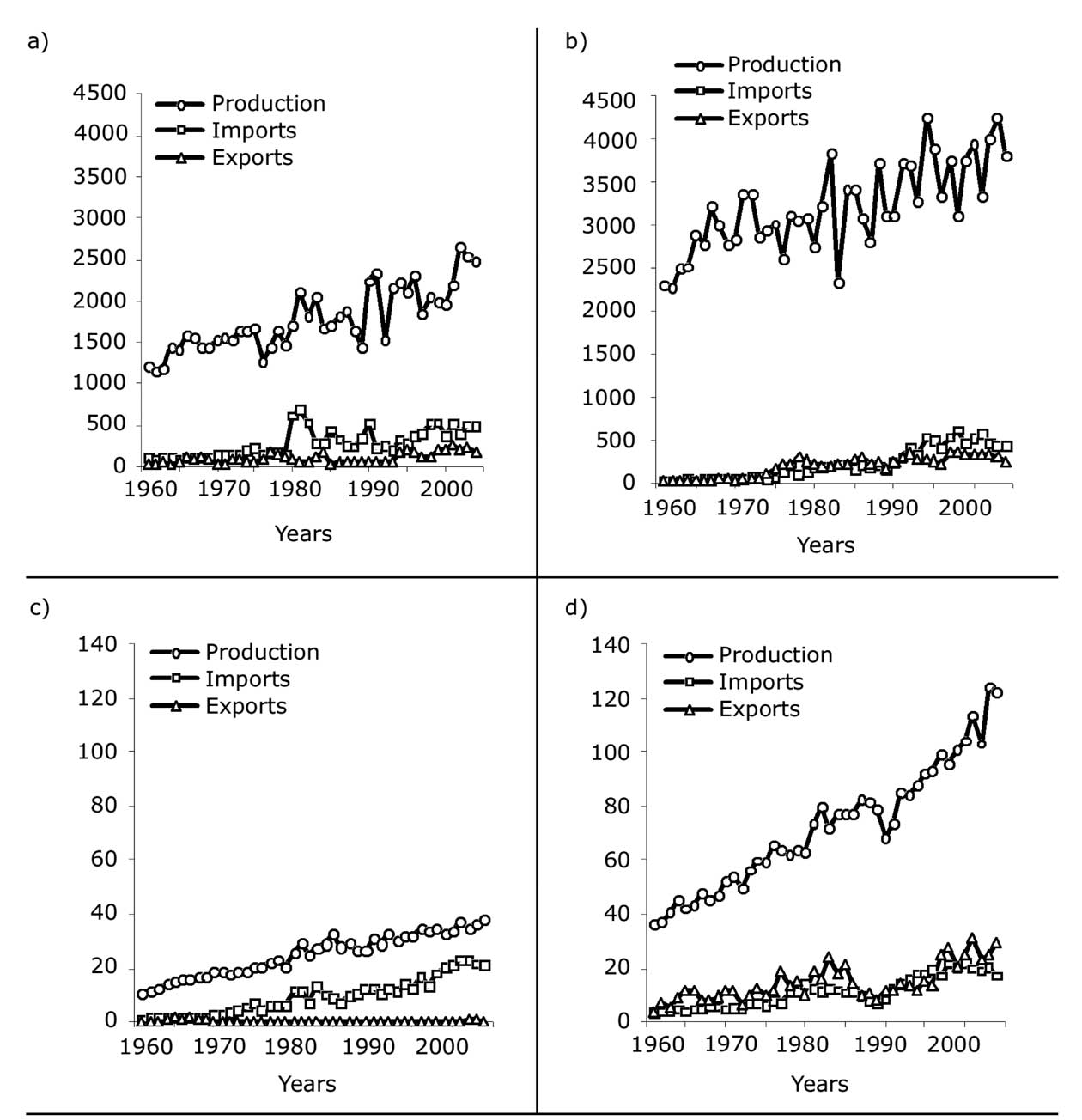
| Previous | Return to table of contents | Search Reports | Next |
| « Back to weltagrarbericht.de | ||
38 | Latin America and the Caribbean (LAC) Report

Figure 1-9. Imports and exports of pulses and grains for Latin America and the Caribbean. Pulses data
between 1961 and 2004 for countries in a) Central America and the Caribbean; b) South America; Grains
data between 1961 and 2004 for countries in c) Central America and the Caribbean; d) South America.
Source: FAOSTAT, 2005.
|
nonetheless, thus far these benefits have been monopolized mainly by the large producers and agroindustries (see Box 1-7). Internationally, 90% of the producers who grow transgenics, i.e., 9.3 million, are small-scale producers, but they are almost all in China (6.8 million) and India (2.3 million) (Brookes and Barfoot, 2006; James, 2006). In LAC, most transgenics crops are planted in large tracts in monoculture. Although the promoters of transgenic crops argue that this technology benefits small-scale producers and that it is a sound tool for fighting poverty and hunger in the world (Pray et al., 2002; James, 2006), there are very few empirical studies that verify these assertions for LAC. In a recent study of Roundup-resistant soybean in Argentina, Qaim and Traxler (2005) concluded that transgenic soybean was more profitable than conventional soybean and that small-scale producers benefited the most. A second study on the adoption |
of Bt cotton by producers in Coahuila, Mexico reached
a similar conclusion (Traxler and Godoy-Avila, 2004). Both
cases represent special situations. In the case of Argentina
the producers do not pay for the “intellectual property
rights” for the transgenic seed. Moreover, the classification
of “small” includes producers of up to 100 ha with access to
capital (Qaim and Traxler, 2005). In the case of Mexico, the
producers pay intellectual property rights to the company
Monsanto/D&PL, but they receive credit from the government
to purchase the transgenic seed. In this case the benefit
accrued largely due to the financial and technical support
provided by the government and by the implementation of
other plant protection programs (Traxler and Godoy-Avila, The technology of transgenics has brought about major transformations in the environment and society in some |
| Previous | Return to table of contents | Search Reports | Next |
| « Back to weltagrarbericht.de | ||